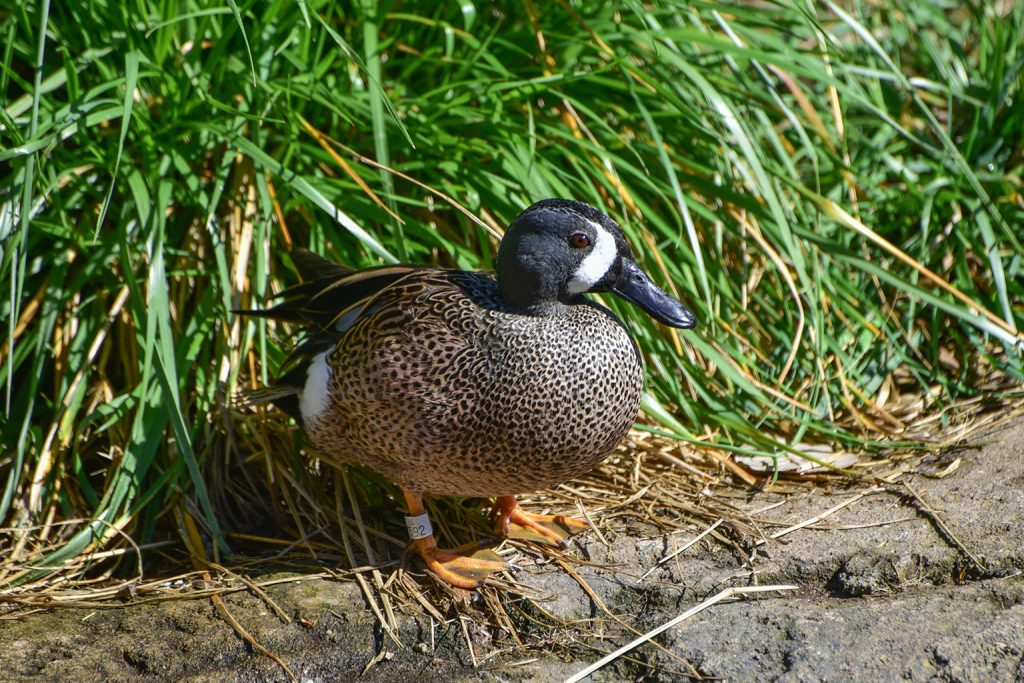Overview
“Where I live”
Blue-winged teal breed across much of central and northern U.S. and Canada in prairie lands. They are the first ducks to leave the breeding grounds in early fall and the last ones to return, so they have a short time to produce a new generation. Blue-winged teal will migrate great distances, from northern Canada deep into Central and South Americas. However, they also winter along the Pacific, Gulf, and Atlantic coasts. Relatively few blue-winged teal spend winters on the Chesapeake Bay compared to other places. Those that do come to the Bay arrive in late summer and tend to congregate in brackish estuarine marshes.
“How I live there”
Blue-winged teal are dabbling ducks that feed on aquatic plants, seeds, and invertebrates in shallow ponds and marshes. They are relatively small ducks that are grayish-brown all over, and not particularly eye-catching except when in flight.
“Making my mark”
Much of the courtship behavior for this species occurs in the air.
“What eats me”
Many different animals, including crows, skunks, ground squirrels, badgers, mink, foxes, and weasels, will take eggs from blue-winged teal nests. It is likely that many of the same predators also take ducklings. Ducklings are preyed upon by snapping turtles, large fish, and some large birds as well. Blue-winged teal nests and eggs may also be lost to mowing (of hay fields) and flooding.
Raising Young
Blue-winged teal renew their pair bonds each year during winter and early spring, and not often with a previous mate. Females usually build their nests in marshes in native prairie grasslands. They build them on the ground, not far from water, in tall grass for cover, and line them with grasses and down. Females lay clutches of 6-14 eggs and incubate them for 24 days on average. A few days into the incubation period, males abandon their mates and begin to gather in groups with other males. Once all eggs hatch, mother birds lead their broods from the nests into tall-grass cover where they can feed and grow in relative protection.
Conservation
The Blue-winged Teal is the second most abundant duck in North America after the Mallard.
Taxonomy
- Kingdom: Animalia
- Phylum: Chordata
- Subphylum: Vertebrata
- Class: Aves
- Order: Anseriformes
- Family: Anatidae
- Genera: Spatula
- Species: discors


